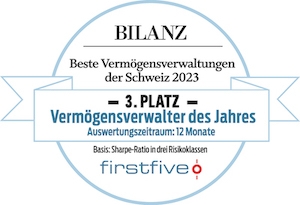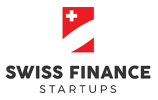We match your convictions with leading investment strategies
- Digital, smart and personal.
Descartes Finance is an owner-run, digital Swiss asset manager. This is what you can expect from us.
It’s all down to strategy
We have strong convictions when it comes to investing.
We follow an investment method based on clear rules. This approach sets the framework for the investment strategies that we develop together with our partners on a scientific basis. The investment style you can choose is either passive or active. The passive style is based on broad market indices. When investing actively, the aim is to beat the market average. There are good arguments for both investment styles.
What do you believe?
-
No one can beat the market!
My strategy is passive, cost-efficient investing.For you we suggest Descartes Index Responsible.
This strategy involves investing your assets close to the index and putting together a portfolio of cost-efficient passive investments, for example exchange-traded funds (ETFs).
The Descartes Index Portfolio is designed for volatile, uncertain market situations. In an endeavour to keep the overall risk of the portfolio significantly lower than the sum of its parts, this strategy strives for balanced risk exposure to different asset classes.
- The Descartes fees come to 0.30% p.a.
- The Swisscanto ETFs are held in a custody account at UBS or Vontobel.
- The all-in account fee at UBS is 0.35% p.a. (excluding third-party fees).
- The all-in account fee at Vontobel is 0.50% p.a. (excluding third-party fees) .
- This strategy is available for the Income, Balanced and Growth risk profiles starting from an investment of CHF 25,000.
-
Risk management is the key!
I choose a portfolio that gives me the optimum rewards for the amount of risk I take.For you we suggest Descartes Minimum Risk ESG.
A minimum risk portfolio is designed to maximise the expected return for a specific risk. The portfolio is efficient and and complies with the principle of sustainability.
Efficiency is achieved by putting together the portfolio on the basis of the risk parameters (volatilities and correlations) forecast for the individual assets, and selecting the assets that in their entirety promise the best performance within a given risk budget. The portfolio is systematically monitored and adjusted if required. This approach draws on the latest findings of financial market research.
- The Descartes fees come to 0.30% p.a.
- The OLZ funds are held in a custody account at UBS or Vontobel.
- The all-in account fee at UBS is 0.20% p.a. (excluding third-party fees).
- The all-in account fee at Vontobel is 0.50% p.a. (excluding third-party fees).
- The strategy is available for all risk profiles, starting from an investment of CHF 25,000
-
There are always opportunities!
I focus on the right tactical composition of my portfolio.For you we suggest Descartes Focus Sustainable.
This strategy is globally oriented and complies with the principle of sustainability.
The asset classes equities and bonds in your portfolio are composed from Swisscanto Invest's pioneering, strictly sustainable range of funds. These funds are characterised by a 20-year established approach, in which ESG criteria (environment, social, governance) are taken into account in the investment decision. The sustainable approach pursued here goes beyond the application of exclusion criteria and the reduction of ESG risks and only invests in companies and countries which fulfil strict sustainability criteria.
- The Descartes fees come to 0.30% p.a.
- The Swisscanto funds are held in a custody account at UBS or Vontobel.
- The all-in account fee at UBS is 0.20% p.a. (excluding third-party fees).
- The all-in account fee at Vontobel is 0.50% p.a. (excluding third-party fees).
- The strategy is available for all risk profiles, starting from an investment of CHF 25,000

How to invest
Our partners
-
With its Swisscanto Invest brand, the Zürcher Kantonalbank is one of the largest fund providers in Switzerland. It offers a comprehensive and high-quality range of products for private investors, companies and institutions. It is also the largest fund provider producing exclusively in Switzerland. Swisscanto Invest is known for its pioneering role in sustainable investments. Its funds regularly receive national and international awards.
-
















